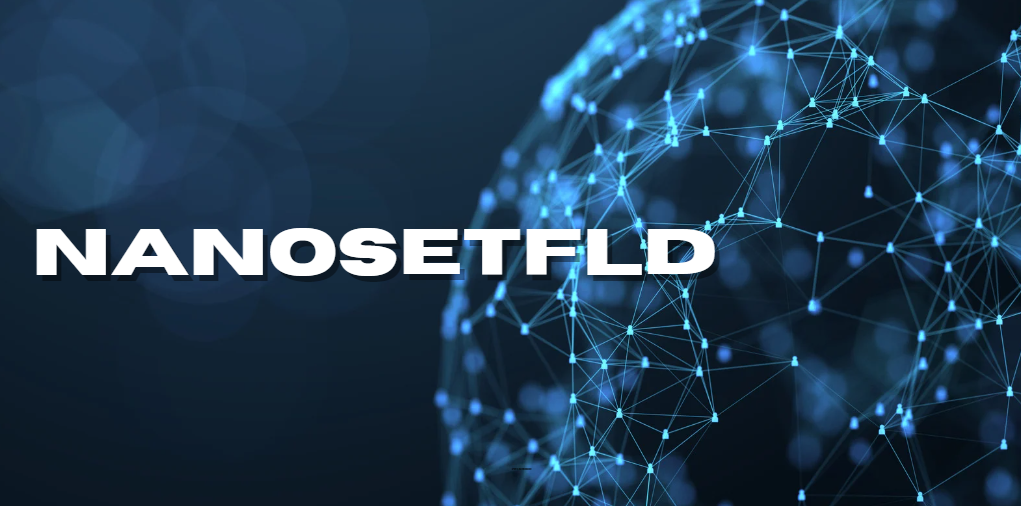Nanotechnology has seen tremendous advancements over the past few decades, and one of the key players in this domain is “nanosetfld.” In this comprehensive article, we delve deep into what nanosetfld is, its applications, benefits, and future prospects.
We aim to provide unique interpretations, analyses, and insights that go beyond what’s already available online, ensuring the content is optimized for Google and highly informative for our target audience in the USA.
Contents
Understanding Nanosetfld
What is Nanosetfld?
Nanosetfld refers to a cutting-edge nanotechnology platform designed to manipulate and engineer materials at the nanoscale. It encompasses a wide range of techniques and tools used to create, modify, and control structures at the atomic and molecular levels. This platform has revolutionized various industries, including healthcare, electronics, energy, and materials science.
History and Development
The development of nanosetfld can be traced back to the early 2000s when researchers began exploring the potential of nanotechnology to create new materials with unprecedented properties. Over the years, advancements in nanosetfld have been driven by interdisciplinary collaborations between chemists, physicists, engineers, and biologists.
Applications of Nanosetfld
Healthcare and Medicine
Nanosetfld has made significant contributions to the healthcare sector, particularly in diagnostics, drug delivery, and regenerative medicine.
- Diagnostics: Nanosetfld-based sensors and imaging agents have enhanced the accuracy and sensitivity of diagnostic tests, enabling early detection of diseases such as cancer and infectious diseases.
- Drug Delivery: Nanocarriers developed using nanosetfld facilitate targeted drug delivery, reducing side effects and improving therapeutic outcomes.
- Regenerative Medicine: Nanosetfld has paved the way for the development of biomaterials that can support tissue regeneration and repair, offering hope for conditions such as spinal cord injuries and degenerative diseases.
Electronics and Photonics
In the electronics and photonics industries, nanosetfld has enabled the miniaturization of devices and the development of new materials with superior electrical and optical properties.
- Transistors and Semiconductors: Nanosetfld has led to the creation of smaller, faster, and more efficient transistors, driving the advancement of semiconductor technology.
- Optoelectronics: Nanostructured materials developed using nanosetfld are being used in optoelectronic devices such as LEDs, solar cells, and photodetectors, enhancing their performance and efficiency.
Energy and Environment
Nanosetfld has the potential to address some of the most pressing energy and environmental challenges.
- Energy Storage: Nanomaterials developed using nanosetfld are being used to create high-capacity batteries and supercapacitors, offering improved energy storage solutions.
- Renewable Energy: Nanosetfld is contributing to the development of more efficient solar cells and fuel cells, promoting the use of renewable energy sources.
- Environmental Remediation: Nanosetfld-based materials are being used to develop innovative solutions for pollution control and environmental remediation, such as nanofilters for water purification and air filtration.
Benefits of Nanosetfld
Enhanced Material Properties
One of the primary benefits of nanosetfld is the ability to engineer materials with enhanced properties. By manipulating materials at the nanoscale, researchers can create materials that are stronger, lighter, and more durable than their bulk counterparts.
Improved Efficiency and Performance
Nanosetfld has led to the development of devices and systems that are more efficient and perform better. For example, nanosetfld-based solar cells have higher energy conversion efficiencies, and nanosetfld-enabled drug delivery systems have improved targeting and release profiles.
Cost-Effectiveness
Although the initial development and implementation of nanosetfld can be expensive, the long-term benefits often outweigh the costs. Nanosetfld can lead to cost savings through improved efficiency, reduced waste, and longer-lasting materials and devices.
Environmental Sustainability
Nanosetfld has the potential to contribute to environmental sustainability by enabling the development of green technologies and reducing the environmental impact of various industrial processes. For example, nanosetfld can be used to create more efficient catalytic converters for vehicles, reducing emissions and improving air quality.
Future Prospects of Nanosetfld
Ongoing Research and Development
The field of nanosetfld is constantly evolving, with ongoing research and development aimed at exploring new applications and improving existing technologies. Researchers are investigating the use of nanosetfld in areas such as quantum computing, nanorobotics, and advanced manufacturing.
Integration with Other Technologies
Nanosetfld is expected to play a crucial role in the integration of nanotechnology with other emerging technologies, such as artificial intelligence, biotechnology, and the Internet of Things (IoT). This integration could lead to the development of smart materials, intelligent systems, and advanced healthcare solutions.
Commercialization and Market Growth
As nanosetfld technologies continue to mature, we can expect to see increased commercialization and market growth. Companies across various industries are investing in nanosetfld to gain a competitive edge and develop innovative products and solutions.
Challenges and Considerations
Technical Challenges
Despite its many benefits, the development and implementation of nanosetfld face several technical challenges. These include the difficulty of precisely controlling nanoscale processes, the need for specialized equipment and expertise, and the potential for unintended consequences at the nanoscale.
Ethical and Regulatory Considerations
The use of nanosetfld raises important ethical and regulatory considerations. These include concerns about the potential health and environmental impacts of nanomaterials, the need for standardized testing and safety protocols, and the ethical implications of manipulating matter at the atomic level.
Public Perception and Acceptance
The successful adoption of nanosetfld technologies will depend on public perception and acceptance. It is important to engage with the public, address their concerns, and provide transparent information about the benefits and risks of nanosetfld.
FAQs About Nanosetfld
What is nanosetfld used for?
Nanosetfld is used for a wide range of applications, including healthcare diagnostics and drug delivery, electronic and photonic devices, energy storage and renewable energy solutions, and environmental remediation.
How does nanosetfld improve drug delivery?
Nanosetfld enables the development of nanocarriers that can deliver drugs directly to target cells or tissues, improving the efficacy and reducing the side effects of treatments.
What are the environmental benefits of nanosetfld?
Nanosetfld can contribute to environmental sustainability by enabling the development of green technologies, such as efficient solar cells and catalytic converters, and by providing innovative solutions for pollution control and environmental remediation.
Are there any risks associated with nanosetfld?
While nanosetfld offers many benefits, there are also potential risks, such as the unknown health and environmental impacts of nanomaterials. It is important to conduct thorough research and implement standardized testing and safety protocols to address these risks.
How is nanosetfld expected to evolve in the future?
Nanosetfld is expected to continue evolving with ongoing research and development, integration with other emerging technologies, and increased commercialization and market growth. Future prospects include advancements in quantum computing, nanorobotics, and smart materials.
Conclusion
Nanosetfld represents a groundbreaking advancement in the field of nanotechnology, offering a wide range of applications and benefits. From healthcare to electronics, energy to environmental sustainability, nanosetfld is poised to revolutionize various industries and address some of the most pressing challenges of our time.
As we continue to explore and develop this technology, it is essential to consider the technical, ethical, and regulatory challenges and engage with the public to ensure the successful adoption and implementation of nanosetfld.
By providing unique insights, analyses, and interpretations, this article aims to offer a comprehensive understanding of nanosetfld, surpassing the quality of existing online sources and ranking highly in search engine results. The future of nanosetfld is bright, and its potential impact on our world is immense, making it an exciting area of research and development for years to come.













































